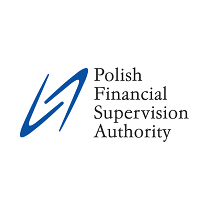
Recently, the Polish Financial Supervision Authority (PFSA) has published the results of its survey among local brokerages about the Forex profitability rate achieved by their local clients. The study encompassed results gathered between the 1st of January up until the 31st of December of 2013. With its population of 35 million, Poland represents a significant sample size for forex profitability reporting.
According to the study, about 81% of clients of forex brokers in Poland realized losses on their accounts, while 19% of the clients have achieved gains. With such low profitability results when compared to the US forex profitability report published by Forex Magnates every quarter, our reporters have reached out to prominent local broker mForex, which is a division of one of the leading Polish banks, mBank S.A. (former BRE Bank).

Maksymilian Skolik, Head of CFD/FX at Dom Maklerski mBanku S.A.
Mr. Maksymilian Skolik, Head of CFD/FX at Dom Maklerski mBanku S.A., shared with Forex Magnates that the survey results are not really surprising.
“FX and CFDs trading is a zero sum game as is the case with any other derivatives market. It is very difficult to expect substantially different results for exchange traded derivatives like stock index futures or options, but unfortunately PFSA doesn’t provide such data.”
There are a variety of reasons as to why there are four losers for every winner on the market. Extreme Leverage , lack of experience and education combined with sometimes questionable marketing practices are all on the table. While the Polish regulator should be worried about the results of its study, we can’t help but agree that it would also help for the PFSA to provide similar data for professional investors.
A recently published study by the French regulator, Autorité des Marchés Financiers (AMF), showed even lower forex profitability. Over a four-year period between 2009 and 2012, the percentage of investors experiencing losses came in at 89% with an average loss totaling $13,800.
Mr. Skolik shared, “Definitely one of the main reasons for this low profitability is extreme leverage offered by some brokers. From my experience it seems that clients are not able to asses risk properly when leverage is too high. Extreme leverage results in clients being stopped out of their positions even during relatively small market moves.”
“Of course, any regulatory leverage limitations would have negative implications for the industry short-term, as the lower leverage would mean lower volumes and that in turn lowers income for brokers. But long-term that would have some positive effects as well,” he continued.
There is a big lesson to be learned from Japan’s experience concerning this matter. Trading volumes at Japanese forex brokers have actually peaked last year, even after the aftermath of the substantial forex trading leverage reduction introduced by the JFSA following the financial crisis.
Mr. Skolik elaborated, “Improper marketing practices of some brokers and not enough education among clients are other issues affecting traders. There have been many cases of usually unregulated foreign brokers, marketing FX markets as an easy source of additional income. In fact, there is nothing like an easy gain in FX and success takes a lot of training and education.”
Some big brokerage houses like FXCM, recently fully transitioned into an agency model, reducing spreads and transferring their business model to a commission-based revenue. More educated traders last longer on the forex markets and are providing their brokers with more value in the long run if they remain profitable trading the markets.
“I hope that with a proper blend of regulation and education it is possible to move the success ratio to over 30%, as it has been for some time in the U.S., the quarterly NFA data also available through Forex Magnates' website shows that for the last few years the success rate has been over 30% most of the time, sometimes even in the 35-40% space, which I believe is an extremely good result,” Mr. Skolik concluded his statement to Forex Magnates.

















